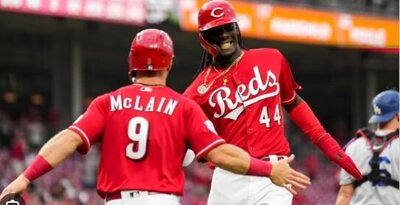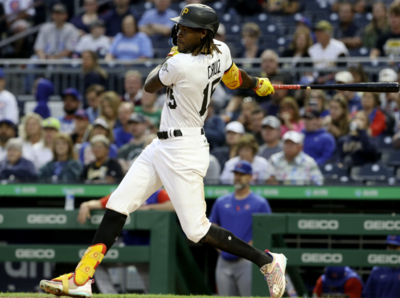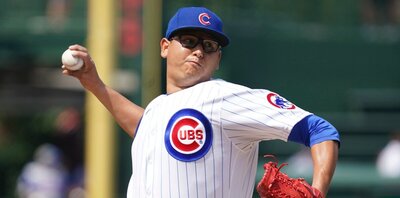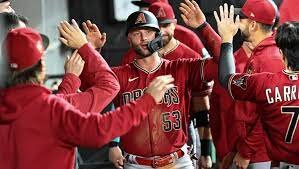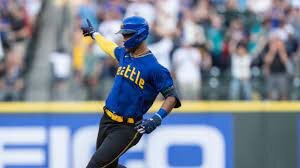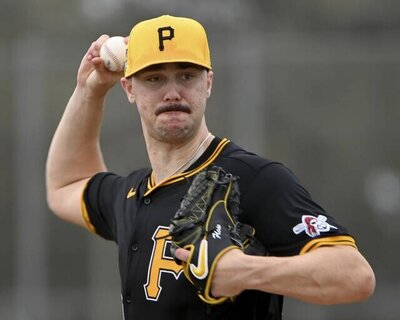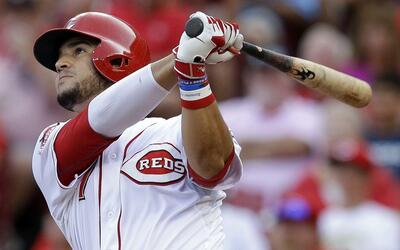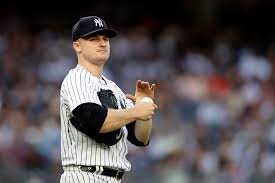Felipe Paulino:
Paulino’s stuff is always tantalizing, but his issues with command usually impede his success. This was not the case on Thursday night as Paulino walked 3 in 5 innings, but was able to pitch around the walks, allowing just 1 ER while striking out 6. Paulino’s shown decent peripherals this year with a terrific 8.7 K/9 and adequate 3.40 BB/9, but he’s suffered from some miserable luck with a HR/FB of over 18% and a .370 BABIP against. Paulino’s shaky track record with his command makes him a risky asset to bet on, but his elite K Rates will always make him someone to keep an eye on.
Chipper Jones:
It would appear we’re finally starting to see some signs of decline from Chipper Jones. Chipper’s K Rate has jumped up this year to over 14%-15% range after having sat in the 11%-13% range the last two seasons, but most importantly his XBH Rate has dropped from near 11% down below 10%. Throw in some uncharacteristically poor luck on balls in play (.249 BHIP%) and you have the makings of a disappointing season. I wouldn’t be surprised to see Chipper bounce back for one more good 20+ HR season, but the injury risk combined with now more clear decline in power skill is an indication Chipper’s run of elite production is coming to an end.
Tommy Hanson:
With the Braves having been eliminated from playoff contention prior to the start of their game and Tommy Hanson having eclipsed his career high in innings by 39, it was a bit surprising to see the Braves run Hanson out there in a meaningless game. But there he was, piling on more good numbers for his rookie of the year candidacy with 7 strong innings against the Nationals. Hanson allowed just 7 base-runners (5 hits and 2 BB’s) and 1 ER, while striking out 9. It’s a tough year to be a ROY candidate in the NL with Chris Coghlan, Garrett Jones, and even Casey McGehee deserving of the award, but for my money no rookie has been as impressive as Hanson who finishes with an 11-4 record with a 2.89 ERA and 1.18 WHIP. As impressive as the raw production were the peripherals (8.2 K/9, 3.2 BB/9). He’s had some good luck limiting HR’s given his high FB Rate, so we’ll expect some regression in his ERA next season, but he looks like a legitimate #2 fantasy starter. Here’s hoping the Braves willingness to push Hanson further beyond the Verducci Rule (30 innings over career high is a cap for under 25 pitchers), has no ill effects next season.
Brad Hawpe:
At age 30, Hawpe’s seen slight deterioration in his peripherals across the board. He’s walking a bit less, striking out a bit more, hitting the ball on the ground a bit more; though strangely seeing a rise in his extra base hit rate thanks to more 2B’s than 1B’s this year. With the Rockies having a slew of young talent ready to take over more significant roles in the OF and Hawpe scheduled to get a rise in his arbitration figure, Hawpe is an obvious trade candidate for the Rockies. Although a move away from friendly Coors Field would appear to be a detriment to Hawpe’s value, his home/road splits have been mild throughout his career: .286/.380/.506 at home; .280/.375/.487 on the road. While the career numbers suggest a move wouldn’t have a large impact, a new environment could take time to adjust and Hawpe’s declining peripherals suggest a fall-off is on the way regardless of home park. He deserves a mild downgrade for his keeper value heading into next season.
Mark Reynolds:
It’s been an absolute crawl to the finish line for Mark Reynolds. After a September in which Reynolds hit .187/.286/.363 and struck out 36 times in 91 AB’s, Reynolds went 1-4 with 2 more K’s on Thursday. The lack of contact isn’t coming with Reynolds usual power which is the real problem as he’s posted just 8 extra base hits in his last 103 AB’s. Reynolds improvements this season have come from a jump in power and a reckless approach on the base-paths that have led to more SB attempts. The power would seem to be real but I question the SB production in the future and with a K Rate in the high 30’s the batting average will have serious fluctuation. I noted Reynolds value would never be higher mid season and I’ll reiterate that now to fantasy owners preparing for next season. Reynolds will likely be drafted as a Top 25-30 talent, despite coming with significant volatility in his production. If you’re a Reynolds owner in a keeper format, I’d consider taking advantage of this peak in value and getting a more established star who offers more consistent production.

